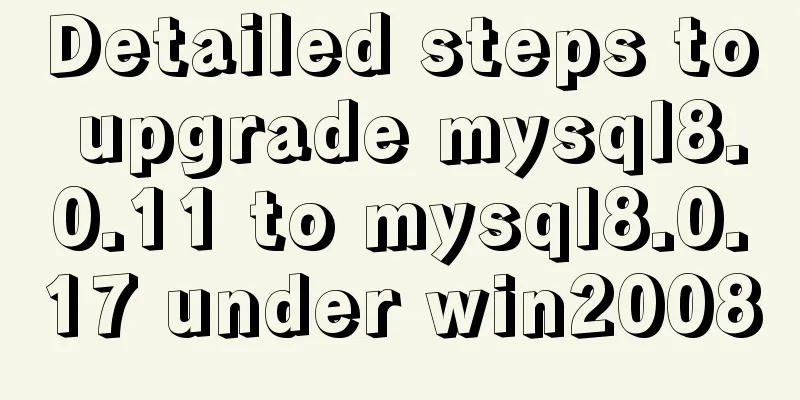Basic usage examples of listeners in Vue

PrefaceVue provides a more general way to respond to data changes through the watch option. This approach is most useful when you need to perform asynchronous or expensive operations when data changes. 1. Basic usage of listener
<div id="demo">{{ fullName }}</div>
var vm = new Vue({
el: '#demo',
data: {
firstName: 'Foo',
lastName: 'Bar',
fullName: 'Foo Bar' },
watch:
firstName: function (val) {
this.fullName = val + ' ' + this.lastName },
lastName: function (val) {
this.fullName = this.firstName + ' ' + val } } })
The purpose of this code is to monitor firstName and fullName, and when they change, change the value of fullname. 2. Listener FormatListener in method format
Object format listener
3. Trigger monitoring and deep monitoring as soon as the page is enteredTrigger the listener as soon as you enter the page
const vm = new Vue({
el: '#app',
data: {
info:
username: 'admin'
}
},
watch:{
info:
handle(newVal){
console.log(newVal)
},
// Trigger the listener as soon as the page is entered immediate: true
}
}
})
Deep MonitoringIn the above code, we cannot monitor successfully when username changes, because what changes is the value of the object attribute, so we need deep monitoring, just add the deep option
const vm = new Vue({
el: '#app',
data: {
info:
username: 'admin'
}
},
watch:{
info:
handle(newVal){
console.log(newVal)
},
// Trigger the listener as soon as the page is entered immediate: true,
// Implement deep monitoring. As long as any property of the object changes, the "object monitoring" will be triggered.
deep: true
}
}
})
Deep listening returns the value of the sub-property of the listening objectThe execution result of the above code is to print the info object. We want to print the value of username, but it is troublesome to add newVal.username. We can actually directly monitor and print the value of the changed sub-attribute. We only need to add a layer of single quotes around the sub-attribute to be monitored:
const vm = new Vue({
el: '#app',
data: {
info:
username: 'admin'
}
},
watch:{
'info.username': {
handle(newVal){
console.log(newVal)
}
}
}
})
at last⚽This article introduces the basic use of listeners in Vue and how to implement deep listening. I hope you will gain something after reading it~ This concludes this article on the basic usage of listeners in Vue. For more information on the usage of Vue listeners, please search for previous articles on 123WORDPRESS.COM or continue to browse the following related articles. I hope you will support 123WORDPRESS.COM in the future! You may also be interested in:
|
<<: Detailed explanation of the idea of distributed lock in MySQL with the help of DB
>>: Vue-cli framework implements timer application
Recommend
MySQL 8.0.15 download and installation detailed tutorial is a must for novices!
This article records the specific steps for downl...
Detailed installation process and basic usage of MySQL under Windows
Table of contents 1. Download MySQL 2. Install My...
Detailed explanation of cocoscreater prefab
Table of contents Prefab How to create a prefab T...
How to use async and await in JS
Table of contents 1. async 2. await: 3. Comprehen...
Two solutions for automatically adding 0 to js regular format date and time
Table of contents background Solution 1 Ideas: Co...
MySQL 5.7.16 free installation version graphic tutorial under Linux
This article shares the MySQL 5.7.16 free install...
How to deploy springcloud project with Docker
Table of contents Docker image download Start mys...
How does Vue solve the cross-domain problem of axios request front end
Table of contents Preface 1. Why do cross-domain ...
React Hook usage examples (6 common hooks)
1. useState: Let functional components have state...
How to hide the text in the a tag and display the image? Compatible with 360 mode rendering
Often you will encounter a style of <a> tag ...
A brief discussion on the whole process of Vue's first rendering
Table of contents 1. Vue initialization vue entry...
Some slightly more complex usage example codes in mysql
Preface I believe that the syntax of MySQL is not...
JavaScript Basics Operators
Table of contents 1. Operators Summarize 1. Opera...
Detailed explanation of how to solve the circular reference problem encountered when using JSON.stringify
When programmers do TypeScript/JavaScript develop...
Implementation of Element-ui Layout (Row and Col components)
Table of contents Basic instructions and usage An...









